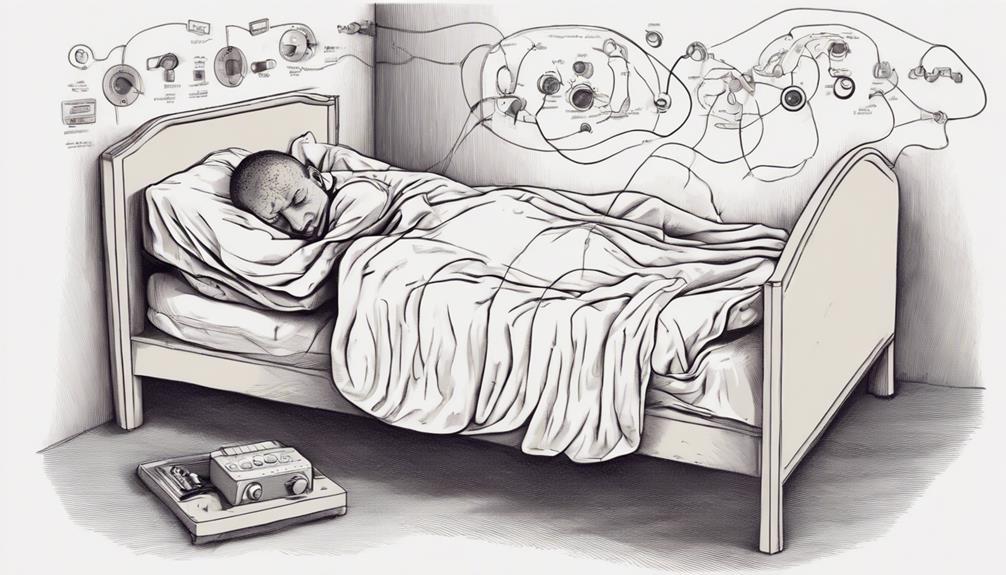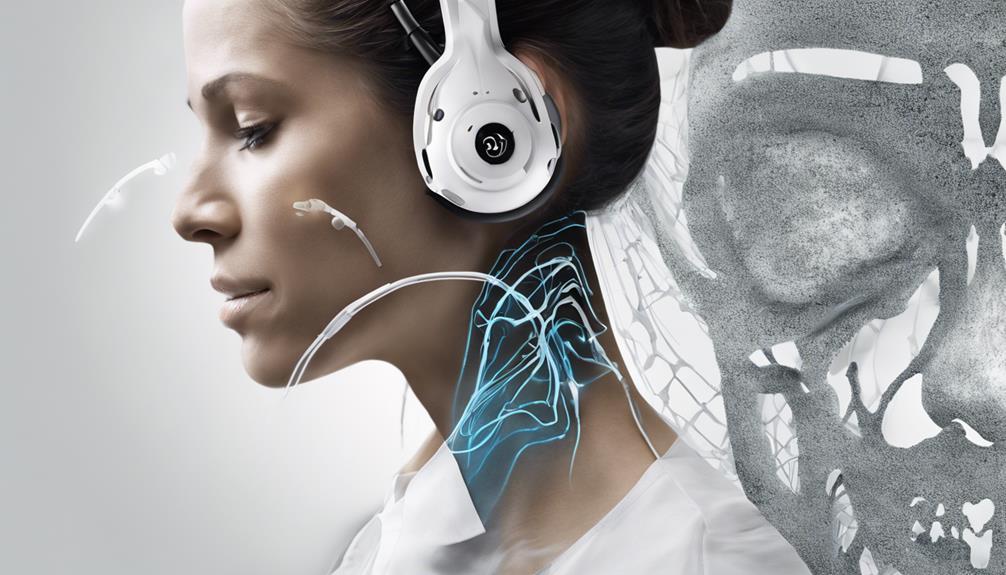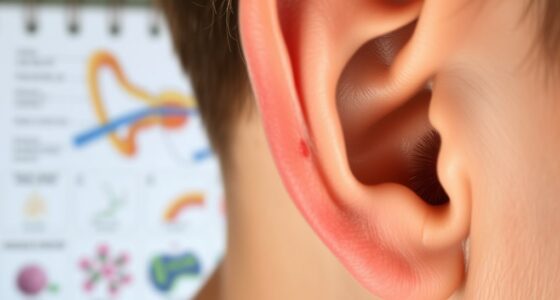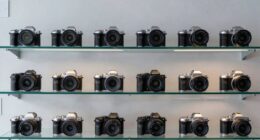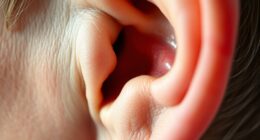In the current sound environment, the soft hum of audio devices can seem like a soothing melody, but what if this seemingly harmless sound is actually posing a threat to our hearing?
The gentle waves of sound that envelop us may harbor hidden dangers that could impact our auditory health in ways we never imagined.
In our exploration of how sound machines can cause hearing loss, we uncover a silent risk that demands our attention and consideration.
Let's uncover the intricacies of this issue together and shed light on the steps we can take to protect our precious sense of hearing.
Key Takeaways
- Monitoring volume levels and distance from the crib is crucial for preventing hearing damage.
- Early detection of signs like speaking loudly can aid in identifying potential hearing issues.
- Consult pediatricians for safe volume guidelines and follow expert recommendations for sound machine usage.
- Creating a safe sleep environment and practicing safe sound machine habits are essential for children's hearing health.
Risks of Using Sound Machines
When considering the risks associated with using sound machines, it becomes evident that vigilance in monitoring volume levels is paramount to safeguarding children's hearing health.
Noise exposure, particularly at loud levels, poses a significant risk of hearing damage in children. Sound machines, while beneficial for creating a soothing environment, can potentially lead to hearing loss if not used safely.
The average volume at which children listen to music, ranging from 70 to 100 decibels, is within the range that can cause harm over time. It's crucial to be aware that noise at 100 decibels can start causing damage in just a few minutes, emphasizing the importance of controlling the volume levels emitted by these machines.
Consulting with pediatricians for guidelines on keeping sound machines below 60% to 70% volume is essential in mitigating the risks associated with their usage. Ensuring that sound machines are placed at a safe distance from the bed and continuously monitoring the volume levels are key steps in preventing potential hearing loss in children.
Impact on Hearing Health
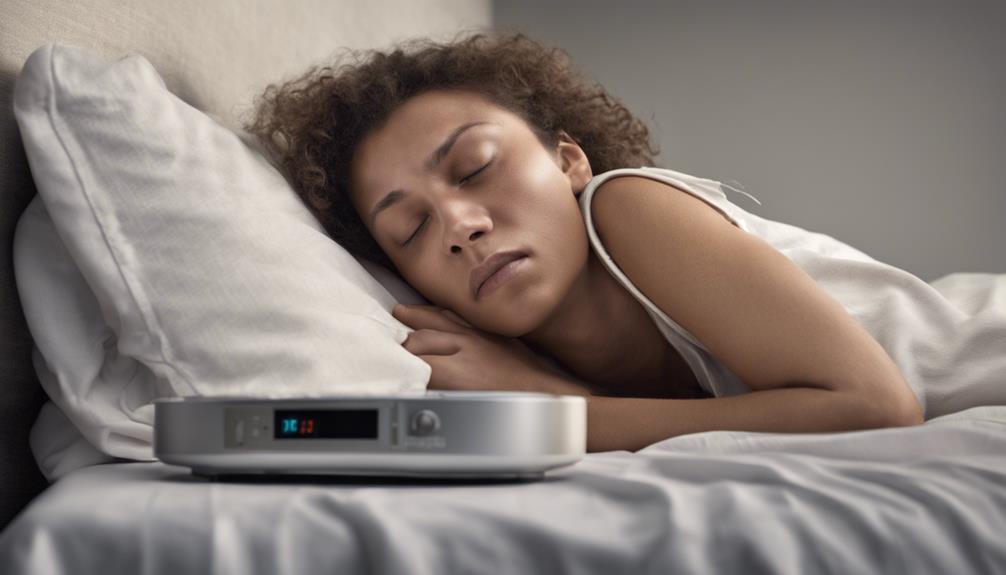
To fully grasp the impact on children's hearing health, it's crucial to understand the potential risks associated with sound machines emitting noise levels above 70 decibels.
Exposure to excessive noise, especially over prolonged periods of time, can have detrimental effects on auditory processing and overall hearing. White noise machines, commonly used to aid baby sleep, can inadvertently cause hearing damage if not used cautiously within the safe decibel range.
The exposure to loud sound levels, particularly those exceeding 85 decibels, poses a potentially harmful risk to children's delicate ears. It's essential to be vigilant about monitoring the volume levels of these machines, ensuring they don't exceed recommended thresholds to safeguard against noise-induced hearing loss.
Signs of Hearing Damage
Children exhibiting signs of hearing damage may display a range of auditory and communication-related symptoms that indicate potential issues with their hearing health. These signs can manifest as speaking loudly, having difficulty with pronunciation, or failing to react to loud noises.
Additionally, children with hearing problems may experience changes in communication, comprehension, and learning abilities. It's crucial to address any signs of hearing issues promptly, as the American Academy of Pediatrics warns that prolonged exposure to noise levels exceeding 70 decibels can lead to damage, with 100 decibels causing harm within minutes.
Infants, in particular, are vulnerable to environmental noise and high volume, which can result in hearing loss if not managed appropriately. Regular monitoring of children's hearing and being vigilant for signs of hearing damage are essential for early detection and intervention to mitigate long-term risks.
Preventing Hearing Loss

Transitioning from understanding the signs of hearing damage in children to discussing preventative measures is crucial. Maintaining sound machines at safe decibel levels below 50 dB is essential to mitigate the risk of hearing loss. In pediatrics, especially during infant sleep, sound machines for sleep are popular choices for creating a soothing environment. While white noise can be beneficial for promoting sleep, keeping the volume at a safe level is crucial. Prolonged exposure to sounds above 70 decibels, similar to the noise level of loud music, can lead to damage in the inner ear structures over a long period of time.
Sleep Consultants recommend monitoring the volume and feel of the sound to ensure it remains soothing without reaching too-loud sounds that could harm hearing. By being mindful of the volume and duration of exposure, parents can create a safe sleep environment for their children, safeguarding them against potential hearing loss.
Safe Usage Tips
Maintaining sound machines at safe decibel levels below 50 dB is crucial to prevent potential hearing loss, as recommended by the American Academy of Pediatrics and the CDC. To help ensure safe usage of sound machines, here are some tips:
- Monitor Volume Levels: Use a decibel meter app to check the sound machine volume regularly and adjust it to stay below the recommended thresholds.
- Place the Sound Machine Correctly: Position the sound machine at a safe distance from the baby's crib to effectively block disturbing sounds without causing harm.
- Follow Placement Guidelines: Adhere to guidelines for placing the sound machine in the nursery to optimize its benefits while minimizing any risks.
- Use White Noise Wisely: Understand how white noise helps with sleep and consider its benefits when using a sound machine, especially for parents who use it to help their infants rest peacefully.
Frequently Asked Questions
Can a Sound Machine Cause Hearing Loss?
Yes, sound machines can cause hearing loss if used improperly. Prolonged exposure to sound machines above 70 decibels poses a risk, especially for children with smaller ear canals. The American Academy of Pediatrics highlights the danger, noting that noise at 100 decibels can harm hearing in minutes.
To safeguard against potential issues, it's crucial to monitor and regulate sound machine volume, keeping it between 60-70% for children's safety.
How Does Sound Cause Hearing Loss?
Exposure to sound above 85 decibels can harm our inner ear's hair cells, leading to hearing loss. This damage is often irreversible. Factors like distance from the source and duration of exposure play a role in the impact of sound on hearing.
Symptoms can include gradual loss, distorted sounds, speech comprehension challenges, and tinnitus. It's crucial to protect our hearing by being mindful of sound levels, especially from devices like sound machines.
What Are the Problems With Sound Machines?
Sound machines can lead to hearing loss in children due to prolonged exposure to high decibel levels. Children listening at 70 to 100 decibels face risks. The American Academy of Pediatrics warns about potential harm.
Exposure to noise above 70 decibels can cause long-term damage, while levels over 120 decibels can immediately harm hearing. It's crucial to monitor sound machine use to protect children's hearing health.
What Are 4 Common Side Effects of Noise-Induced Hearing Loss *?
Let's delve into the four common side effects of noise-induced hearing loss. They include:
- Gradual hearing loss
- Distorted sounds
- Difficulty understanding speech
- Tinnitus
These symptoms indicate damage to the delicate hair cells in the cochlea, often caused by exposure to loud noises.
It's crucial to recognize these signs early on and take steps to protect our hearing from further harm.
Conclusion
In conclusion, it's imperative to recognize the potential risks associated with sound machines and their impact on children's hearing health. By being vigilant of the signs of hearing damage and taking proactive measures to prevent hearing loss, we can ensure the well-being of our children's auditory health.
Consulting with healthcare professionals for guidance on safe sound machine use is essential in safeguarding our loved ones from long-term consequences. Let's prioritize our children's hearing health and take necessary precautions to protect their precious ears.

